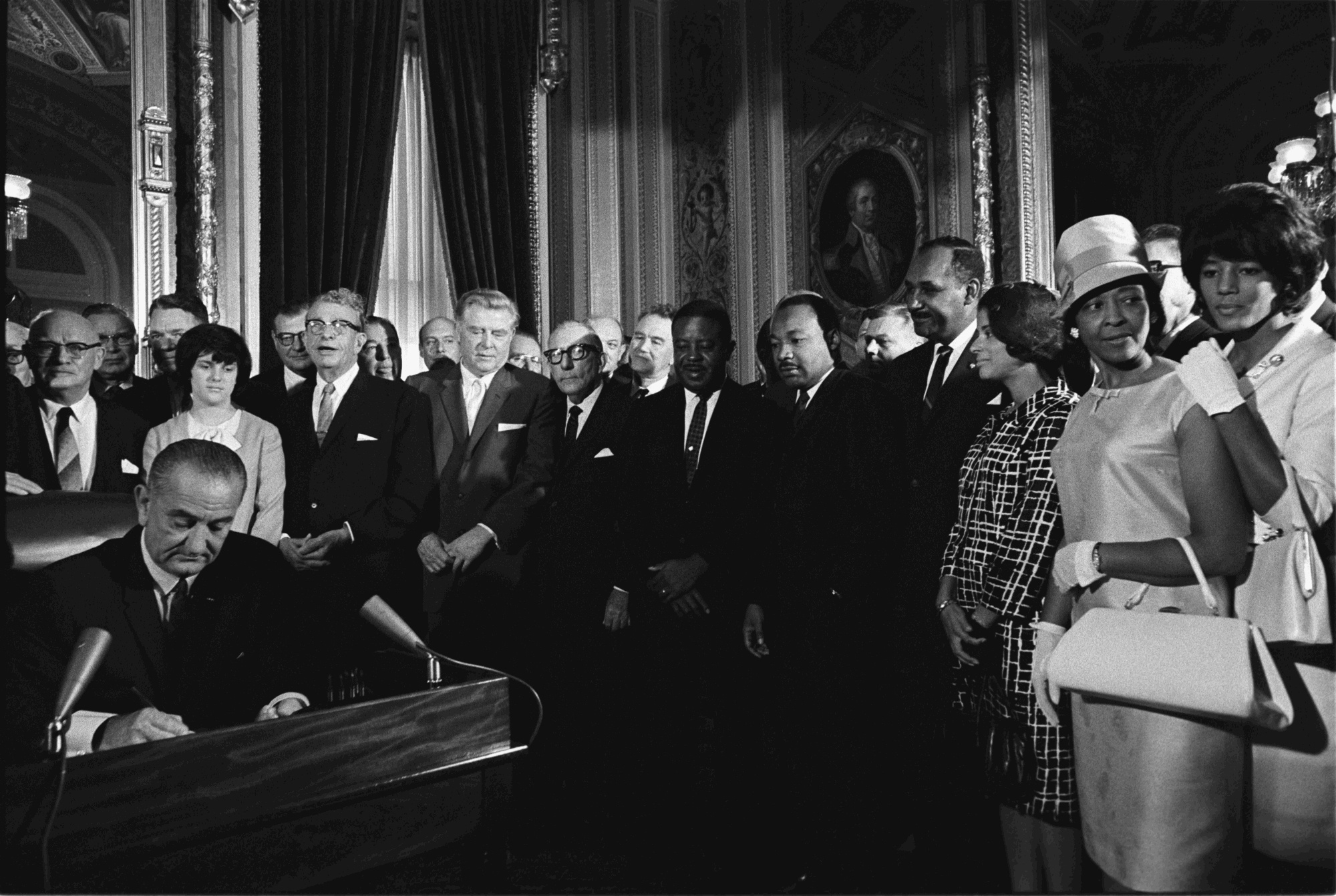On July 19, 1848, over 300 (mostly) women gathered for the Seneca Falls Convention,…
The Long Road to Suffrage for Black Women in the United States

August 6, 1965: President Lyndon B. Johnson signs the Voting Rights Act of 1965
We often hear the question, “When did women of color, particularly Black women, get the right to vote?” The short answer is that, legally, all women should have gained the right when the 19th Amendment was declared part of the U.S. Constitution in 1920. The reality, however, is far more complicated for women of color.
For background, the women’s suffrage movement began to gain traction in the 1840s, and the first women’s rights convention in the United States was held in Seneca Falls, NY, in 1848. However, as the movement grew, leaders such as Elizabeth Cady Stanton and Susan B. Anthony excluded Black women. As BLFF President and Founder Barbara Lee puts it, “One of the most painful chapters of the Suffrage movement was the fight over the 15th amendment, which gave Black men the vote fifty years before White women. The argument split the suffragists and revealed deep-seated racism.” Some of the prominent Black women leading the inclusive branch of the women’s rights movement included Sojourner Truth, Harriet Tubman, Mary Church Terrell, Ida B. Wells, and many others.
Fast forward to May 21, 1919. After decades of resistance and persistence from suffragists across the country, the House of Representatives passed the 19th Amendment. The Senate followed on June 4, 1919, and on August 18, 1920—once 36 states had ratified—the 19th Amendment became part of federal law. Finally, on August 26, 1920, the 19th Amendment was officially declared part of the Constitution by the federal government.
The amendment itself states: “The right of citizens of the United States to vote shall not be denied or abridged by the United States or by any State on account of sex.” However, in practice, “citizens of the United States” generally meant “White voters.” Especially in parts of the South, voter suppression tactics were openly used to target Black voters up until the passage of the Voting Rights Act of 1965. Signed into law on August 6, 1965 – 54 years ago today—this act was specifically written into law to back up the 15th Amendment by outlawing literacy tests, polling taxes, and other restrictions that made it difficult, if not impossible, for Black Americans to register or safely vote. The VRA of 1965 saw immediate results, with a huge boost to Black voter registration numbers across the country.
Despite this success, disenfranchisement of minorities in the United States is far from over. Voter suppression tactics continue, and will likely be a major topic of discussion in the 2020 election cycle, as minority voters and their allies fight to make their voices heard at the ballot box.
The history of racism and voting rights in the United States is long and intertwined, and cannot possibly be summed up in a single blog post. To learn more, we suggest checking out these additional resources:
- For more information on intersectionality in the Suffrage movement, head here.
- For more on the Black women leaders within the Suffrage movement, head here and here.
- You can learn more about the evolution and current state of the Voting Rights Act of 1965 here.
- To learn more about the fight for voting rights by state, head here.






